Best Practices Articles

B2B Marketing in the Age of Intelligence: A Comprehensive Guide for Industry Leaders
Introduction to B2B Marketing
In the rapidly evolving business world, understanding the nuances of B2B (Business-to-Business) marketing is becoming increasingly crucial, especially for companies aiming to excel in the high-tech industry. Unlike B2C (Business-to-Consumer) marketing, where products and services are directed toward individual customers, B2B marketing focuses on meeting the needs of other businesses, which often involves more complex decision-making processes and longer sales cycles. This distinction underscores the importance of developing tailored marketing strategies that address the unique challenges and opportunities in the B2B landscape.
Table of Contents
- What is B2B marketing, and how does it differ from B2C marketing?
- Why is B2B marketing important for high-tech manufacturers?
- What are the critical components of a successful B2B marketing strategy?
- How has B2B marketing evolved with digital technology?
- What are common challenges in B2B marketing, and how can they be addressed?
- How can high-tech manufacturers identify and segment their target market?
- What role does content marketing play for high-tech companies in B2B marketing?
- How can digital platforms and social media enhance B2B marketing for high-tech companies?
- What are effective lead generation and nurturing practices in the high-tech B2B space?
- How can data analytics and customer feedback improve tech companies' B2B marketing strategies?
- What innovative strategies can be used for branding in the high-tech industry?
- How is account-based marketing (ABM) beneficial for high-tech manufacturers?
- What are the global marketing challenges for high-tech B2B companies?
- How can sales and marketing alignment improve B2B outcomes in tech?
- What future trends in B2B marketing should high-tech manufacturers be aware of?
- What is partner marketing, and why is it significant for high-tech B2B efforts?
- How can high-tech firms select the right partners for their marketing efforts?
- What strategies enhance collaboration with partners in marketing and sales?
- How can technology facilitate better partner marketing activities?
- What are the best practices for evaluating the success of partner marketing initiatives?
- How do lead generation and conversion rates impact the ROI of direct B2B marketing?
- Why is partner contribution crucial in measuring the success of indirect B2B marketing?
- How can CRM systems and analytics improve the measurement of B2B marketing effectiveness?
- What is the role of sales team feedback in enhancing B2B marketing ROI?
- How does understanding Customer Lifetime Value (CLV) change B2B marketing strategies and ROI measurement?
The essence of B2B marketing lies in its foundational approach: creating personalized relationships, demonstrating in-depth industry knowledge, and showcasing products or services that enhance operational efficiency and profitability for other businesses. For example, Adobe's Marketing Cloud services exemplify effective B2B marketing by providing comprehensive digital solutions tailored to meet the complex needs of different companies. This strategic focus on delivering value, coupled with understanding the target audience's professional motivations, sets B2B marketing apart from its B2C counterpart.
For high-tech manufacturers, the stakes are even higher. Their products and services, often characterized by high specialization and innovation, require marketing strategies that effectively communicate complex technical information and demonstrate tangible ROI to potential business clients. The intricacies of these products also necessitate a deeper engagement with customers, focusing on building long-term relationships rather than merely facilitating one-time transactions.
This introductory section aims to delve into the core aspects of B2B marketing, highlighting its importance, challenges, and strategies, particularly within the high-tech sector. By exploring how B2B marketing differs from B2C marketing, the significance of market research, content marketing, and digital platforms, as well as the evolution of customer relations in the digital age, this discussion sets the stage for a comprehensive examination of the subject. As we navigate the intricacies of B2B marketing strategies, lead generation, and the impact of digital technology, we'll uncover the critical components that high-tech manufacturers must consider to succeed in this competitive landscape.
Part I – What Is Direct B2B Marketing
Introduction:Direct B2B marketing represents a targeted approach where businesses directly communicate and engage with potential corporate clients. Unlike indirect methods, direct B2B marketing focuses on personalized interactions that cater to businesses' specific needs and interests, aiming to build long-term relationships. This marketing segment is essential for companies that rely on a clear understanding of their clients' business environments, challenges, and goals. This section will explore the fundamentals of direct B2B marketing, its importance for high-tech manufacturers, and the key components that constitute a successful strategy. We will also explore how digital transformation reshapes these strategies and the everyday challenges marketers face in this domain.
- What is B2B marketing, and how does it differ from B2C marketing?
B2B (Business-to-Business) marketing refers to the strategies and practices employed by companies to sell their products or services to other businesses, as opposed to individual consumers (B2C – Business-to-Consumer). The fundamental differences between B2B and B2C marketing arise primarily from the customers' nature and the purchasing decision processes.
In B2B marketing, the target audience comprises professionals and organizations seeking efficiency, expertise, and return on investment. Decision-making processes in B2B transactions are typically more complex and involve multiple stakeholders, such as purchasing managers, department heads, and financial officers. This leads to longer sales cycles than B2C scenarios, where purchases are often driven by emotion and personal desire, resulting in quicker decision-making.
Moreover, B2B marketing requires a more tailored approach, creating personalized relationships and demonstrating an in-depth understanding of the client's business and industry. For example, a company manufacturing industrial machinery would focus its marketing efforts on showcasing its products' technical specifications, efficiency, and cost-saving benefits to other businesses rather than highlighting aesthetic features or personal satisfaction, which would be more common in B2C marketing.
An example of effective B2B marketing is Adobe’s Marketing Cloud services, which target other businesses needing comprehensive digital marketing solutions. Instead of selling individual software, Adobe markets services tailored to companies looking to optimize their online presence and analytics.
- Why is B2B marketing important for high-tech manufacturers?
B2B marketing is vital for high-tech manufacturers for several reasons. Firstly, their products and services are often highly specialized and designed for specific industrial applications rather than for the general consumer market. This requires a marketing approach targeting other businesses that can benefit from these advanced solutions, such as aerospace, healthcare, or information technology companies.
The nature of high-tech products often means they play crucial roles in purchasing businesses' operations, efficiency, and innovation capabilities. Effective B2B marketing helps high-tech manufacturers demonstrate their solutions' value and potential impact, addressing target industries' specific challenges and pain points. For example, a manufacturer of advanced robotics may use B2B marketing to highlight how their products can enhance precision and efficiency in automotive assembly lines, directly addressing the concerns of automotive manufacturers.
Moreover, B2B marketing facilitates long-term relationships between manufacturers and their business clients. Given the complex nature and high investment typically associated with high-tech products, buyers often look for reliable partners rather than mere suppliers. Through strategic B2B marketing, high-tech manufacturers can establish themselves as industry leaders and trusted advisors, fostering loyalty and long-term partnerships.
Additionally, B2B marketing allows high-tech manufacturers to understand better their market and customer needs through feedback and engagement, leading to continuous improvement and innovation in their product offerings. This is essential in fast-evolving industries where staying ahead of technological trends can be a significant competitive advantage.
Overall, B2B marketing enables high-tech manufacturers to reach and communicate with their target audience, demonstrate the value of their complex products, and build essential relationships that drive business success more effectively.
- What are the critical components of a successful B2B marketing strategy?
A successful B2B marketing strategy for high-tech manufacturers encompasses several critical components:
- Market Research involves gathering and analyzing data about the industry, competitors, and potential customers. Effective market research helps manufacturers understand industry trends, identify market needs, and position their products to meet them. For high-tech manufacturers, staying ahead of technological advancements and regulatory changes is crucial for maintaining relevance and competitiveness.
- Targeting and Segmentation: High-tech manufacturers must identify the businesses and decision-makers most likely to benefit from their products. This involves segmenting the market based on industry, company size, geographic location, and specific technological needs. Precise targeting ensures that marketing efforts are focused and relevant, increasing the chances of engaging potential clients.
- Content Marketing: In B2B, purchasing decisions are often based on detailed information and proof of value. Content marketing allows high-tech manufacturers to provide this information through whitepapers, case studies, blogs, and webinars. Content should be tailored to the audience and designed to educate, inform, and demonstrate thought leadership, helping to build trust and credibility in the market.
- Lead Generation and Nurturing: Effective lead generation involves attracting potential customers through various SEO, paid advertising, and social media channels. Once leads are generated, they must be nurtured through personalized communications, offering relevant information and solutions to move them through the sales funnel. For high-tech products, where the sales cycle can be long and complex, nurturing is particularly important to maintain engagement and gradually build a strong case for purchase.
- Measurement and Analysis: To continually improve and optimize their marketing strategies, high-tech manufacturers need to measure the effectiveness of their efforts. This includes tracking metrics such as lead quantity and quality, conversion rates, and customer acquisition costs. By analyzing these metrics, manufacturers can identify what is working, what is not, and where there are opportunities for improvement.
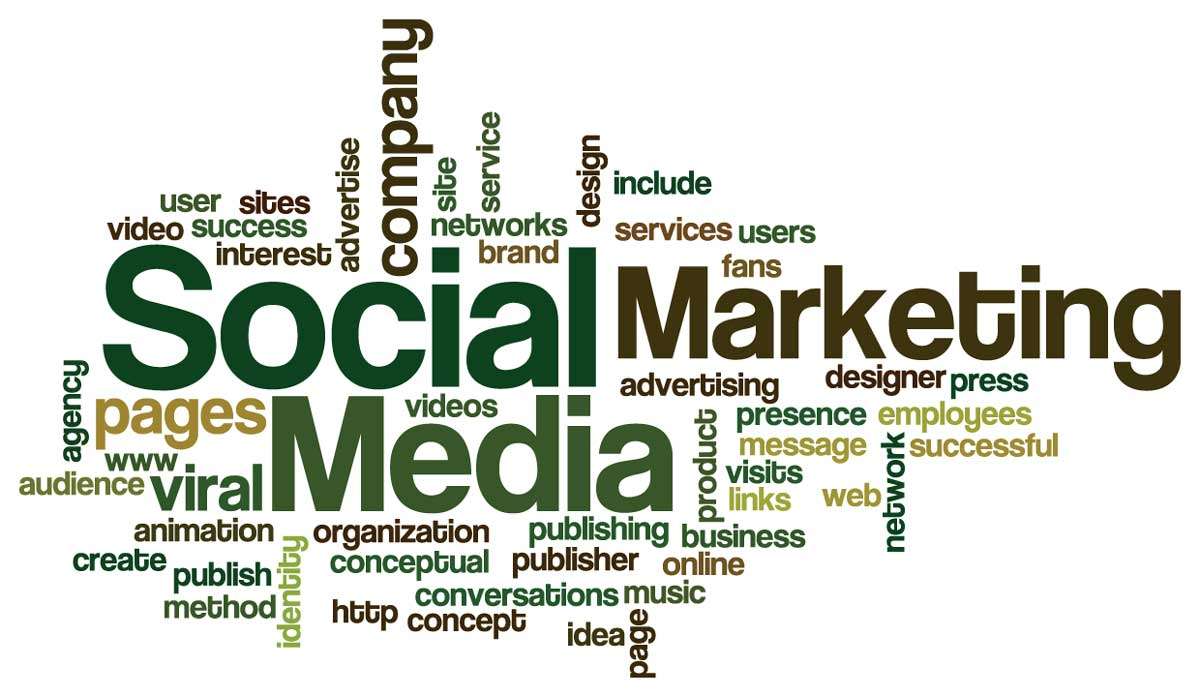
Implementing these components effectively requires a deep understanding of the market, clear communication of complex technical information, and a strategic approach to building relationships with potential clients. Together, they form the foundation of a successful B2B marketing strategy for high-tech manufacturers.
- How has B2B marketing evolved with digital technology?
The evolution of B2B marketing in the context of digital technology has been profound and multifaceted. Digital technology has revolutionized how businesses reach and engage with their target audiences, particularly in the B2B sector, where the decision-making process is complex and information-driven.
One significant change is the shift towards online platforms for research and purchasing decisions. B2B buyers now routinely use the internet to find information, evaluate suppliers, and make purchasing decisions. High-tech manufacturers have adapted by developing comprehensive digital marketing strategies that include optimized websites, search engine marketing, and online content tailored to the B2B buyer's journey.
Social media and professional networking platforms like LinkedIn have become essential tools for B2B marketers. These platforms allow high-tech manufacturers to build brand awareness, share content, and engage directly with potential customers. They also provide valuable platforms for thought leadership, helping manufacturers establish authority and credibility in their respective fields.
Another significant advancement is data analytics and customer relationship management (CRM) systems. These technologies allow high-tech manufacturers to gather, analyze, and act on vast customer behavior, preferences, and engagement data. Manufacturers can create more targeted, personalized, and effective marketing campaigns by leveraging this data.
Additionally, automation and artificial intelligence have introduced new possibilities for personalization and efficiency in B2B marketing. Automated email campaigns, chatbots, and personalized content recommendations can provide potential customers with relevant information at precisely the right time, improving the customer experience and increasing the chances of conversion.
Digital technology has made B2B marketing more data-driven, personalized, and efficient. For high-tech manufacturers, adapting to these changes is crucial for reaching and engaging the modern B2B buyer effectively.
- What are common challenges in B2B marketing, and how can they be addressed?
B2B marketing, particularly in the high-tech sector, face several common challenges:
- Identifying and Reaching Decision-Makers: B2B purchases often involve multiple stakeholders, making it challenging to identify and reach the individuals with purchasing power. To address this, marketers can use targeted content and messaging tailored to different roles within the target organization. Platforms like LinkedIn for targeted advertising and networking can also help reach key decision-makers directly.
- Complex Sales Cycles: The B2B sales cycle can be long and complicated, requiring persistent and consistent marketing efforts. Marketers can address this challenge by developing a content strategy that engages potential customers at each sales cycle stage, from awareness to consideration to decision. Regular follow-ups and nurturing campaigns can keep the manufacturer top-of-mind for potential customers.
- Proving ROI: Demonstrating the return on investment (ROI) of B2B marketing efforts can be challenging, particularly with long sales cycles and complex products. Marketers can overcome this by setting clear, measurable goals for each campaign and closely tracking performance metrics such as leads generated, conversion rates, and sales attributed to marketing efforts. Tools like CRM systems and marketing automation software can facilitate tracking and reporting.
- Differentiating from Competitors: Standing out in crowded markets can be challenging for high-tech manufacturers. To differentiate themselves, companies should focus on developing unique value propositions that communicate the benefits and advantages of their solutions. Case studies, testimonials, and technical whitepapers can help demonstrate expertise and build trust with potential customers.
- Adapting to Technological Changes: The fast pace of technological change can make it difficult for B2B marketers to keep up. Marketers should continuously monitor industry trends and adjust their strategies to stay relevant. This might involve investing in new technologies, experimenting with emerging digital marketing channels, or updating product offerings to meet changing market needs.
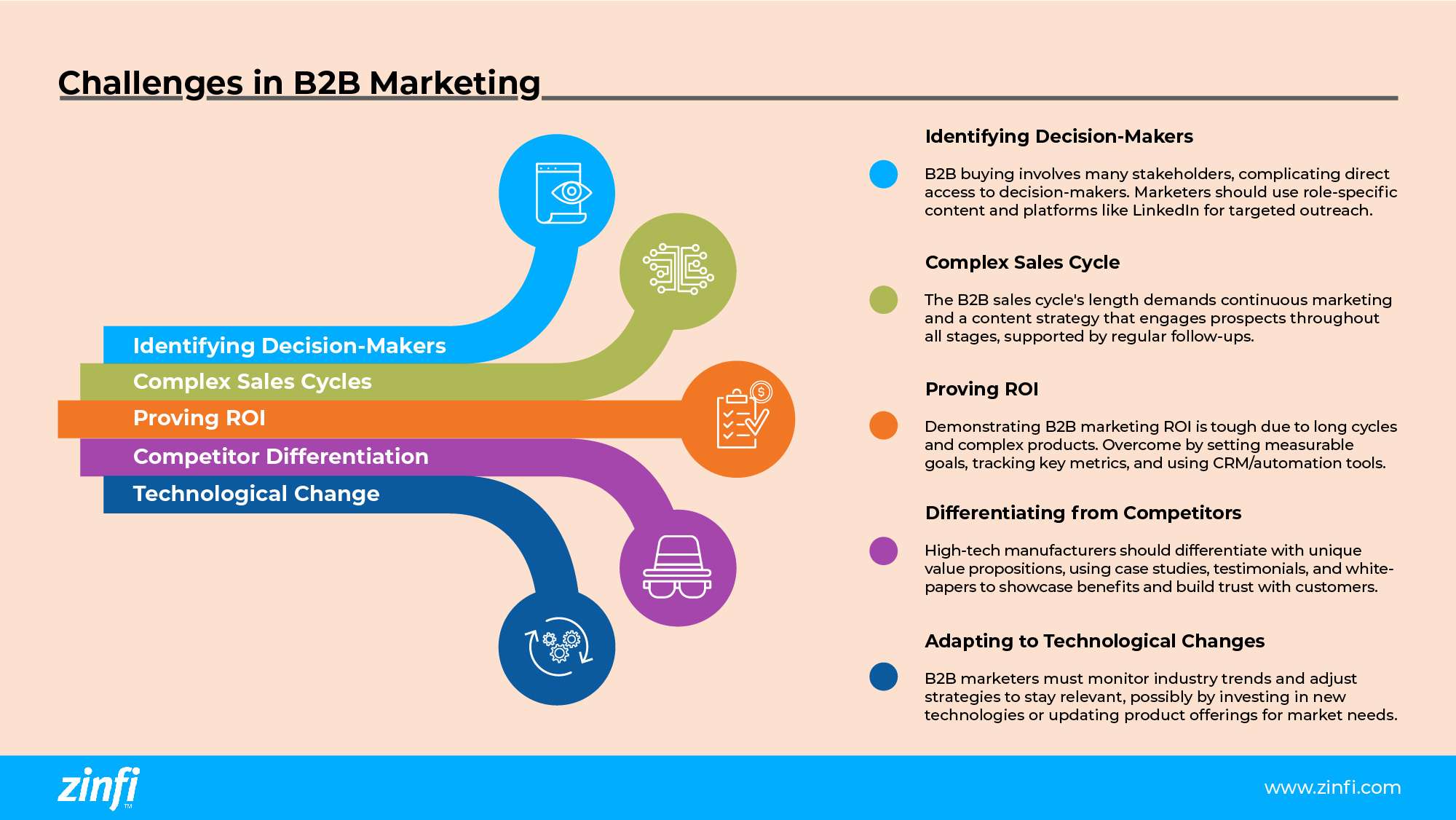
In conclusion, direct B2B marketing is a cornerstone for companies aiming to establish profound connections with other businesses. By focusing on personalized, targeted strategies, businesses can effectively communicate the value of their products or services directly to their potential clients. However, navigating this landscape requires understanding complex sales cycles, a commitment to building lasting relationships, and adapting to technological advancements. By addressing these challenges and leveraging the right strategies, companies can enhance their direct B2B marketing efforts, leading to more meaningful engagements and successful business outcomes.
Part II – How to Apply B2B Marketing In High-Technology Segment
Introduction:Applying B2B marketing in the high-technology segment presents unique challenges and opportunities. This section delves into the intricacies of identifying and segmenting the target market in the tech industry, where rapid innovation and specific customer needs dictate market dynamics. We explore the pivotal role of content marketing in educating and engaging potential clients, the advantages of leveraging digital platforms and social media, and best practices for effective lead generation and nurturing. Additionally, we'll investigate how data analytics and customer feedback can refine and enhance B2B marketing strategies for high-tech companies, providing them with a competitive edge in a fast-evolving industry.
- How can high-tech manufacturers identify and segment their target market?
High-tech manufacturers can identify and segment their target market through market research, industry analysis, and customer profiling. This process is vital because it helps manufacturers understand the specific needs, challenges, and buying behaviors of different business clients within the tech sector, which can significantly vary. For example, the needs of a small startup looking for scalable cloud solutions can drastically differ from those of a large enterprise seeking advanced cybersecurity measures.
The first step involves conducting detailed market research to gather insights about potential industries that could benefit from the high-tech products. This might include identifying sectors experiencing growth, undergoing digital transformations, or showing a propensity to invest in new technologies. For instance, a manufacturer specializing in precision manufacturing equipment would focus on sectors like aerospace or medical devices, where precision is critical.
Next, manufacturers should segment their identified markets based on business size, technology maturity, geographic location, and specific industry challenges. This segmentation allows for more tailored marketing strategies that can address the unique needs of each segment. For example, IBM segments its services and marketing efforts based on industry-specific needs, providing customized solutions for finance, healthcare, and retail sectors.
Understanding the different business clients in the tech sector requires recognizing that each segment may have different decision-makers, budget cycles, and compliance requirements. By effectively identifying and segmenting their target market, high-tech manufacturers can develop focused marketing strategies that speak directly to their potential client's needs and pain points, leading to higher engagement and conversion rates.
- What role does content marketing play for high-tech companies in B2B marketing?
Content marketing is a cornerstone of B2B marketing for high-tech companies, serving multiple vital functions in their overall strategy. It helps establish the company as a thought leader, educates potential clients about complex products or services, and builds trust by providing value before purchasing.
High-tech products and solutions can be complex and challenging to understand. Companies can demystify their offerings through whitepapers, case studies, blogs, and tech-focused videos and showcase their benefits in real-world applications. For instance, Cisco uses case studies to detail how their solutions have helped other businesses solve specific problems, illustrating the practical application of their products and building credibility and trust.
Content marketing in the high-tech industry is about showcasing products and demonstrating a deep understanding of industry trends, challenges, and innovations. By publishing insightful content that addresses current industry issues or future trends, a high-tech company positions itself as a leader and go-to resource in its field. This approach can significantly impact the buying decision of a potential B2B client looking for a vendor and a partner who understands their sector's unique challenges and needs.
Moreover, high-quality, informative content benefits SEO, helping the company's website rank higher in search results and attract more organic traffic. It also serves as a valuable resource for sales teams and can be used in email marketing campaigns to nurture leads. Overall, content marketing is crucial for high-tech companies in educating, engaging, and converting their B2B audience.
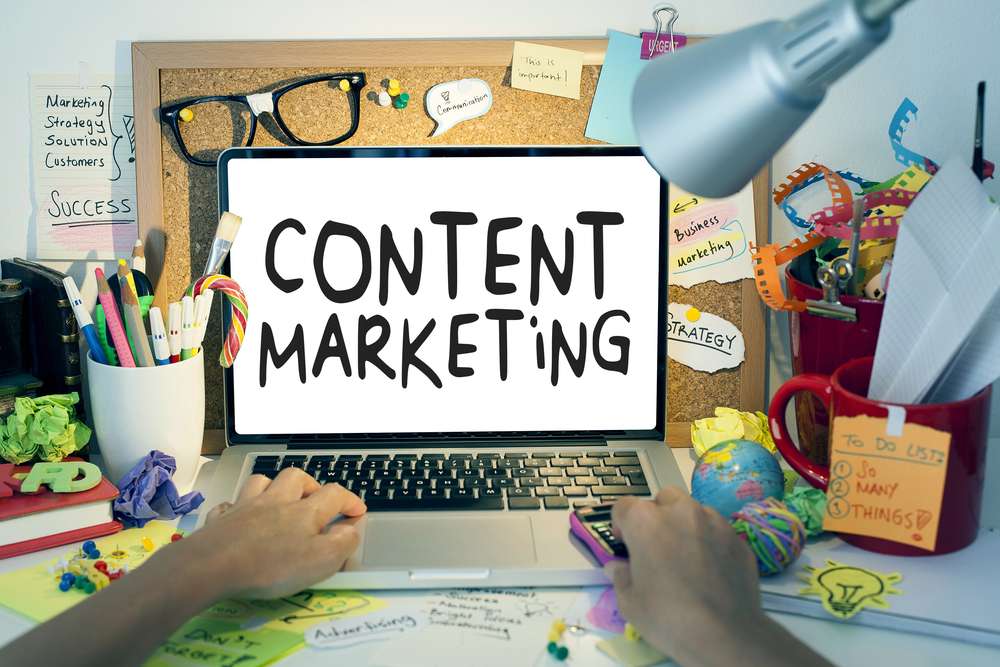
- How can digital platforms and social media enhance B2B marketing for high-tech companies?
Digital platforms and social media have revolutionized B2B marketing for high-tech companies by providing new ways to reach, engage, and understand their target audience. These platforms offer many opportunities for high-tech companies to showcase their expertise, products, and services to a broader yet more targeted audience.
For example, LinkedIn, a professional networking platform, has become an invaluable tool for B2B marketers in the tech sector. Companies can use LinkedIn for brand awareness, thought leadership, lead generation, and customer engagement. By sharing relevant content, participating in industry discussions, and using targeted advertising, high-tech companies can reach decision-makers and influencers in their specific market segments.
Similarly, SEO (Search Engine Optimization) and SEM (Search Engine Marketing) are crucial for high-tech companies to increase their visibility online. By optimizing their websites and content for search engines, companies can attract more high-quality traffic to their sites, where potential clients can learn about their products and services. Effective SEO and SEM can significantly improve a company's online presence and lead-generation efforts.
When done correctly, email marketing remains one of the most effective digital marketing strategies for B2B companies. By sending targeted, personalized emails to prospects and customers, high-tech companies can keep their audience engaged throughout the sales cycle, from initial contact to post-purchase follow-up.
In summary, digital platforms and social media enable high-tech companies to reach a larger yet more targeted audience, engage with prospects and customers on a deeper level, and track the effectiveness of their marketing efforts with unprecedented precision.
- What are effective lead generation and nurturing practices in the high-tech B2B space?
Effective lead generation and nurturing practices are critical for success in the high-tech B2B, where sales cycles are long and purchasing decisions involve multiple stakeholders.
To generate leads, high-tech companies must leverage inbound and outbound marketing strategies tailored to their target audience's needs and preferences.
Inbound marketing tactics, such as content marketing, SEO, and social media, attract potential clients by offering valuable information and solutions to their problems. For example, a high-tech firm can publish whitepapers, blog posts, and webinars that address common industry challenges or emerging trends. These resources help generate leads by drawing potential clients to the company's website and establishing its authority and credibility.
Outbound marketing tactics, such as targeted email campaigns, trade shows, and direct outreach, can be effective, especially when combined with a solid inbound strategy. Personalized emails that address specific needs or pain points can be particularly effective in engaging potential clients and moving them further down the sales funnel.
Once leads are generated, nurturing them becomes crucial to converting them into customers. This involves regular communication and engagement, providing additional resources and information, and addressing any questions or concerns they may have. Effective nurturing practices include segmented email campaigns, targeted follow-ups, and personalized content offerings based on the lead's interests and behavior.
CRM (Customer Relationship Management) systems and marketing automation tools can significantly enhance lead nurturing efforts by enabling high-tech companies to track lead interactions, score leads based on engagement and readiness to buy, and automate personalized follow-up communications. By effectively nurturing leads, high-tech companies can build stronger relationships with potential clients, leading to higher conversion rates and more successful sales outcomes.
- How can data analytics and customer feedback improve tech companies' B2B marketing strategies?
Data analytics and customer feedback are invaluable resources for high-tech companies looking to improve their B2B marketing strategies. By analyzing data from various touchpoints, companies can gain insights into customer behavior, preferences, and pain points, allowing them to tailor their marketing efforts more effectively.
Data analytics can reveal which marketing channels are most effective, what types of content resonate with the target audience, and how prospects move through the sales funnel. This information enables companies to optimize their marketing strategies, allocate resources more efficiently, and improve ROI. For example, if data shows that specific blog posts drive more website traffic and lead conversions, a high-tech company can focus on producing more of that content.
Whether gathered through surveys, social media, or direct interactions, customer feedback provides insight into what customers value, their challenges, and how they perceive the company's products and services. This feedback can refine product offerings, improve customer service, and create more relevant and impactful marketing messages.
For instance, if customer feedback indicates that a technical feature is particularly appreciated or lacks understanding about a specific product, the company can use this information to adjust its product development priorities and create educational content that addresses these areas.
Incorporating data analytics and customer feedback into the marketing strategy enables high-tech companies to become more customer-centric, responsive, and agile in their marketing efforts. By continuously monitoring, analyzing, and acting on this information, companies can improve the effectiveness of their marketing strategies, enhance customer satisfaction, and ultimately drive more sales.
- What innovative strategies can be used for branding in the high-tech industry?
In the high-tech industry, innovative branding strategies go beyond just logos and taglines; they encapsulate the essence of innovation and technological advancement that the company stands for. High-tech companies can leverage storytelling to convey the mission, vision, and values that underpin their technology. For instance, SpaceX’s branding revolves around the compelling narrative of making life multi-planetary, which resonates with innovation and human progress.
Another strategy is demonstrating technological superiority and thought leadership through cutting-edge content, such as augmented reality experiences or interactive demos, allowing customers to explore products or technologies virtually. For example, IBM’s use of Watson AI in different domains, from healthcare to finance, showcases their technological prowess and helps brand IBM as a leader in AI innovation.
Engagement with the tech community through hackathons, webinars, and tech talks can also enhance a brand’s visibility and position it as an integral part of the tech ecosystem. These activities can help foster a community of enthusiasts and professionals who share the brand's passion for technology and innovation.
Moreover, partnerships and collaborations with other tech firms, universities, or research institutions can bolster a high-tech company's branding by associating it with other respected entities in the industry. This strategy can be seen in the numerous collaborations between tech giants and academic institutions to research new technologies or solve complex problems.
In summary, innovative branding strategies for high-tech companies should focus on showcasing their commitment to innovation, providing immersive technological experiences, engaging with the community, and forming strategic partnerships, all of which contribute to building a robust and forward-thinking brand image.
- How is account-based marketing (ABM) beneficial for high-tech manufacturers?
Account-based marketing (ABM) is particularly beneficial for high-tech manufacturers as it aligns marketing and sales efforts toward engaging specific high-value accounts rather than targeting a broad audience. In high-tech industries' complex B2B sales environments, where purchasing decisions involve multiple stakeholders and long sales cycles, ABM provides a focused approach to cultivating meaningful relationships with key accounts.
ABM enables high-tech manufacturers to tailor their marketing and sales strategies to each target account's needs and interests, resulting in more relevant and personalized engagement. For instance, if a manufacturer targets a large aerospace company, all marketing efforts—from personalized emails to customized content and targeted events—would be designed to address the specific challenges and requirements of that company and its decision-makers.
This personalized approach increases the likelihood of engagement, accelerates the sales process, and enhances the overall customer experience. Moreover, by concentrating resources on fewer, higher-value accounts, high-tech manufacturers can achieve a higher ROI on their marketing and sales investments.
Furthermore, ABM facilitates better alignment between marketing and sales teams, as both work towards common, account-specific goals. This collaboration enhances efficiency and effectiveness, leading to more coherent and consistent interactions with target accounts.
For example, Dell Technologies has successfully implemented ABM strategies by creating tailored marketing campaigns for key accounts, leading to deeper relationships and increased sales. By focusing on understanding the unique needs of each account and delivering personalized solutions, high-tech manufacturers can significantly benefit from the ABM approach.
- What are the global marketing challenges for high-tech B2B companies?
Global marketing presents several challenges for high-tech B2B companies, including cultural differences, localization, compliance with local laws and regulations, and varying levels of technological adoption across different regions.
Cultural differences can impact communication styles, business practices, and purchasing behaviors. High-tech companies must understand and respect these differences to effectively engage with clients and stakeholders in different countries. This may involve adapting marketing materials and messages to align with local norms and values, which requires in-depth knowledge of the local culture and business etiquette.
Localization goes beyond simple translation; it involves adapting products, services, and marketing content to meet customers' needs and preferences in different locations. This can be particularly challenging for high-tech products, requiring significant modifications to meet local technical standards, user interfaces, or user experience expectations.
Another significant challenge is compliance with local laws and regulations, such as data protection laws, export controls, and industry-specific regulations. High-tech companies must ensure that their products, services, and marketing practices comply with the legal requirements of each market, which can be complex and time-consuming.
Furthermore, technological adoption levels vary widely between countries and regions, affecting the demand for high-tech products and services. Companies need to tailor their marketing strategies to address the specific technology landscape of each market, which may involve targeting different customer segments or adjusting product offerings.
Microsoft, an example of a high-tech company facing these global marketing challenges, operates in multiple countries with diverse cultures and regulatory environments. Microsoft has successfully navigated these challenges by localizing its products and marketing strategies, ensuring compliance with local laws, and continuously engaging with local communities and businesses to understand and meet their unique needs.
- How can sales and marketing alignment improve B2B outcomes in tech?
Sales and marketing alignment is crucial for improving B2B outcomes in the tech industry, where the buying process is often complex and involves multiple decision-makers. When sales and marketing teams are aligned, they share common goals, strategies, and metrics, leading to more coherent and effective customer engagement.
Alignment between sales and marketing can lead to better lead quality, as marketing efforts are more closely tailored to the sales team's needs and feedback. Marketing can generate leads that are more likely to convert, as they are based on a deeper understanding of the sales process and the target audience's pain points and needs.
Additionally, aligned teams can collaborate more effectively on content creation, ensuring that marketing materials, such as case studies, whitepapers, and product demos, are relevant and useful for sales. This relevant content can help sales teams move prospects through the sales funnel more efficiently.
Regular communication and feedback loops between sales and marketing are essential for alignment. For instance, regular meetings and shared CRM systems can help ensure that both teams are on the same page and can quickly adapt to changing market conditions or customer needs.
An example of successful sales and marketing alignment can be seen in companies like HubSpot, which offers tools and methodologies to ensure that its sales and marketing teams work closely together. This alignment helps HubSpot attract, engage, and delight customers, improving sales outcomes and customer satisfaction.
- What future trends in B2B marketing should high-tech manufacturers be aware of?
High-tech manufacturers should be aware of several emerging trends in B2B marketing to stay competitive and adapt to changing market dynamics. One significant trend is the increasing use of artificial intelligence (AI) and machine learning in marketing activities. AI can help personalize marketing messages, optimize campaign performance, and predict customer behavior, allowing manufacturers to target their audiences more effectively and efficiently.

Another trend is the growing importance of account-based marketing (ABM), which focuses on targeting specific high-value accounts with personalized marketing strategies. As B2B buying processes become more complex and personalized, ABM can help high-tech manufacturers align their marketing and sales efforts more closely with the needs of their most important customers.
The Internet of Things (IoT) is also impacting B2B marketing, as it enables manufacturers to collect and analyze data from connected devices. This data can provide valuable insights into customer usage patterns and preferences, enabling more targeted and effective marketing strategies.
Sustainability and corporate social responsibility are becoming increasingly important in B2B marketing. Companies are expected to demonstrate their commitment to environmental and social issues, which can influence purchasing decisions, particularly in sectors where sustainability is a significant concern.
Finally, the rise of digital and virtual experiences, accelerated by the COVID-19 pandemic, is changing how high-tech manufacturers interact with their customers. Virtual events, webinars, and augmented reality (AR) and virtual reality (VR) experiences are becoming more common, offering new ways to engage customers and showcase products.
By staying abreast of these trends and incorporating them into their marketing strategies, high-tech manufacturers can improve engagement with current and potential clients, enhance their brand reputation, and drive sales in an increasingly competitive and fast-changing market.
Conclusion:Concluding this segment, effective B2B marketing in the high-technology sector requires a blend of strategic insights, technological understanding, and customer-centric approaches. High-tech companies must navigate a complex landscape of rapid changes and specialized needs. By implementing targeted strategies, embracing digital transformation, and prioritizing customer engagement and feedback, high-tech manufacturers can forge meaningful connections, drive innovation, and achieve sustainable growth in the competitive B2B marketplace.
Part III – What Is Indirect (Partner Based) B2B Marketing
Introduction:Indirect B2B marketing, often termed partner or channel marketing, is vital in the high-technology B2B sector. This approach leverages partners' strengths and market presence to promote and sell products or services, extending market reach and enhancing brand visibility. In this part of the article, we will explore the nuances of indirect B2B marketing, including the significance of partner marketing, strategies for selecting the right partners, and the best practices for fostering collaboration in marketing and sales. We will also delve into how technology can streamline partner marketing activities and the metrics essential for evaluating the success of these initiatives. Understanding and implementing these strategies can significantly contribute to the growth and expansion of high-tech B2B companies.

- What is partner marketing, and why is it significant for high-tech B2B efforts?
Partner or channel marketing involves collaborating with other businesses to promote and sell products or services. This strategy is particularly significant for high-tech B2B companies as it allows them to extend their market reach, leverage partners' strengths, and share resources, ultimately leading to increased sales and market presence.
Partner marketing combines different companies' expertise and customer bases in the high-tech industry, where products can be complex and markets rapidly evolve. For example, a software company might partner with hardware manufacturers to offer a bundled solution, providing customers with a comprehensive package. This enhances the value proposition for customers and allows both companies to access new market segments.
The benefits of partner marketing include expanded market reach through access to the partner’s customer base, shared marketing expenses, and leveraging the partner's brand reputation and local market knowledge. This is particularly beneficial for high-tech firms looking to enter new geographical markets or industry segments, as partners can provide valuable insights and access that would be costly or time-consuming to develop independently.
Additionally, partner marketing can enhance product and service offerings by combining complementary technologies or services. For instance, a high-tech company specializing in data analytics software might partner with a cloud computing firm to provide a more comprehensive solution that combines data analysis with scalable storage and computing resources.
An example of successful partner marketing is the collaboration between Intel and Dell. Intel provides the processors, while Dell provides the hardware for laptops and servers. This partnership allows both companies to offer high-performance computing solutions to business customers, leveraging each other's strengths and market presence.
- How can high-tech firms select the right partners for their marketing efforts?
Selecting the right partners is crucial for the success of partner marketing efforts, especially in the high-tech industry, where technological compatibility and brand alignment are essential. High-tech firms should consider several criteria when choosing partners, including market alignment, brand compatibility, technological synergy, and mutual strategic goals.
Market alignment involves selecting partners that target similar or complementary market segments. This ensures that marketing efforts reach the most relevant and responsive audiences. For example, a company specializing in cybersecurity solutions would benefit from partnering with a firm that offers network infrastructure services, as their target markets likely overlap.
Brand compatibility is another important consideration. Partners should have similar values, customer service standards, and reputations in the market. This alignment helps maintain a consistent brand image and ensures customers receive a seamless experience. For instance, if a high-tech firm known for premium, high-quality products partners with a company known for low-cost solutions, this could lead to brand dilution and customer confusion.
Technological synergy is essential in the high-tech sector. Partners should offer products or services that complement each other, enhancing the overall value proposition for customers. This might involve integrating software and hardware solutions or combining different technological platforms to create a more comprehensive solution.
Finally, mutual strategic goals ensure that both parties work towards common objectives, whether expanding into new markets, reaching specific customer segments, or developing integrated solutions. Partners with aligned goals are more likely to invest the necessary resources and efforts into the partnership.
High-tech firms can assess potential partners through due diligence, including reviewing the partner’s product portfolio, market reputation, and previous partnership successes. Initial small-scale collaborations can also help firms evaluate the partnership's potential before committing to more significant initiatives.
- What strategies enhance collaboration with partners in marketing and sales?
Effective collaboration with partners in marketing and sales can significantly enhance the reach and impact of B2B marketing efforts, especially in the high-tech sector. Strategies to improve this collaboration include joint campaigns, co-branding efforts, and shared events.
Joint campaigns allow both companies to pool resources, such as marketing budgets, expertise, and customer databases, to create more impactful and wide-reaching marketing initiatives. These campaigns should leverage the strengths of each partner to promote joint solutions or bundled offers. For example, a software company and a hardware manufacturer could launch a joint email marketing campaign showcasing how their integrated solutions can solve specific business challenges.
Co-branding involves partners jointly marketing a product or service, leveraging both companies' brand strength and market presence. This can enhance the credibility of the offering and attract customers from both companies’ customer bases. Co-branding should be approached carefully to ensure that brand messages are aligned and the partnership is mutually beneficial. An example is the partnership between NVIDIA and various laptop manufacturers, which co-brand laptops equipped with NVIDIA graphics cards, benefiting from its reputation for high-quality graphics performance.
Shared events, such as webinars, trade shows, and conferences, can also be effective for partner collaboration. These events provide a platform for partners to showcase their joint offerings, engage with potential customers, and establish thought leadership in the industry. By sharing the responsibilities and costs associated with these events, partners can achieve a grander scale and impact than they might independently.
In all these strategies, clear communication, defined roles and responsibilities, and aligned goals are crucial for successful collaboration. Partners should establish regular communication channels, agree on marketing messages and campaign objectives, and share data and insights to monitor performance and optimize strategies.
- How can technology facilitate better partner marketing activities?
Technology facilitates practical partner marketing activities, particularly in the high-tech sector. Partner Relationship Management (PRM) tools and shared data platforms are essential technologies that can enhance collaboration, streamline processes, and improve the tracking and measurement of partnership activities.
PRM tools are specifically designed to manage partner relationships, enabling companies to track partner activities, share marketing materials and resources, and manage leads and sales pipelines collaboratively. These tools provide a centralized platform for communication and collaboration, ensuring that both parties have access to the latest information and resources. They can help onboard new partners, disseminate training materials, and ensure consistent channel messaging.
Shared data platforms, such as Customer Relationship Management (CRM) systems, can be integrated with PRM tools to comprehensively view customer interactions, sales pipelines, and marketing performance. By sharing data between partners, companies can ensure that they target the right customers with the right messages, avoid duplication of efforts, and effectively track the origin and progression of leads generated through partnership activities.
In addition to PRM tools and CRM systems, collaborative software such as shared calendars, project management tools, and communication platforms can help partners coordinate their activities and stay aligned on joint marketing efforts. Cloud-based platforms enable real-time collaboration and updates, ensuring all parties work with the most current data and resources.
For example, a high-tech firm might use a PRM tool to share leads with a partner, track the partner’s progress in closing those leads, and provide feedback and support as needed. This collaborative approach improves efficiency and strengthens the partnership by aligning efforts toward common goals.
Technology facilitates better partner marketing activities by improving coordination, communication, and transparency between partners, leading to more effective and successful collaborations.
- What are the best practices for evaluating the success of partner marketing initiatives?
Evaluating the success of partner marketing initiatives is crucial to understanding their impact and optimizing future efforts. Best practices for evaluation include setting clear, measurable goals at the outset, tracking relevant metrics, and conducting regular reviews and optimizations based on performance data.
All partners should agree upon clear, measurable goals before launching a marketing initiative. These goals could range from generating a certain number of leads to achieving specific sales targets or expanding into new market segments. By setting specific, achievable, relevant, and time-bound (SMART) goals, partners can ensure that they have a common understanding of success and can measure their progress effectively.
Tracking relevant metrics is essential for evaluating the success of partner marketing initiatives. These metrics might include lead generation numbers, conversion rates, sales revenue, and market penetration. It’s important that these metrics are aligned with the set goals and that both partners have access to the data needed to evaluate performance. PRM and CRM tools can help track these metrics accurately and in real-time.
Regular reviews and optimizations are also critical to successfully evaluating partner marketing initiatives. Partners should schedule regular meetings to review performance data, discuss challenges and successes, and adjust strategies and tactics as needed. This iterative process allows partners to continuously improve their joint marketing efforts and adapt to changing market conditions or customer needs.
Finally, soliciting feedback from customers and sales teams can provide valuable insights into the effectiveness of the marketing initiatives and areas for improvement. This feedback can help partners understand how their joint offerings are perceived in the market and how they can better meet customer needs in future campaigns.
By following these best practices, high-tech firms can effectively evaluate the success of their partner marketing initiatives, leading to stronger partnerships and more successful outcomes.
Conclusion:In summary, indirect B2B marketing through partner channels offers high-tech companies a potent strategy to extend their reach and amplify their marketing efforts. Successful partner marketing requires careful selection of partners, strategic alignment, and continuous collaboration and communication. By leveraging technology, high-tech firms can enhance these collaborations, ensuring all parties are aligned and contributing effectively towards shared goals. Evaluating the success of these partnerships through precise metrics and feedback is crucial for ongoing improvement and achieving mutual benefits. As such, high-tech companies must view their channel partners not just as external entities but as integral extensions of their marketing efforts, crucial for navigating the complexities of the B2B landscape.
Part IV – How Do You Measure ROI from Direct & Indirect B2B Marketing
Introduction:Measuring the return on investment (ROI) in B2B marketing, whether direct or indirect, is fundamental for evaluating the effectiveness of marketing strategies and ensuring sustainable business growth. This article's final section addresses the critical components and methodologies involved in accurately assessing ROI in B2B marketing. We will explore how lead generation and conversion rates impact ROI, the importance of partner contribution in indirect marketing, the role of CRM systems and analytics, the significance of sales team feedback, and the transformative power of understanding Customer Lifetime Value (CLV). These insights will empower high-tech companies to refine their marketing approaches, optimize resource allocation, and drive more profitable outcomes.
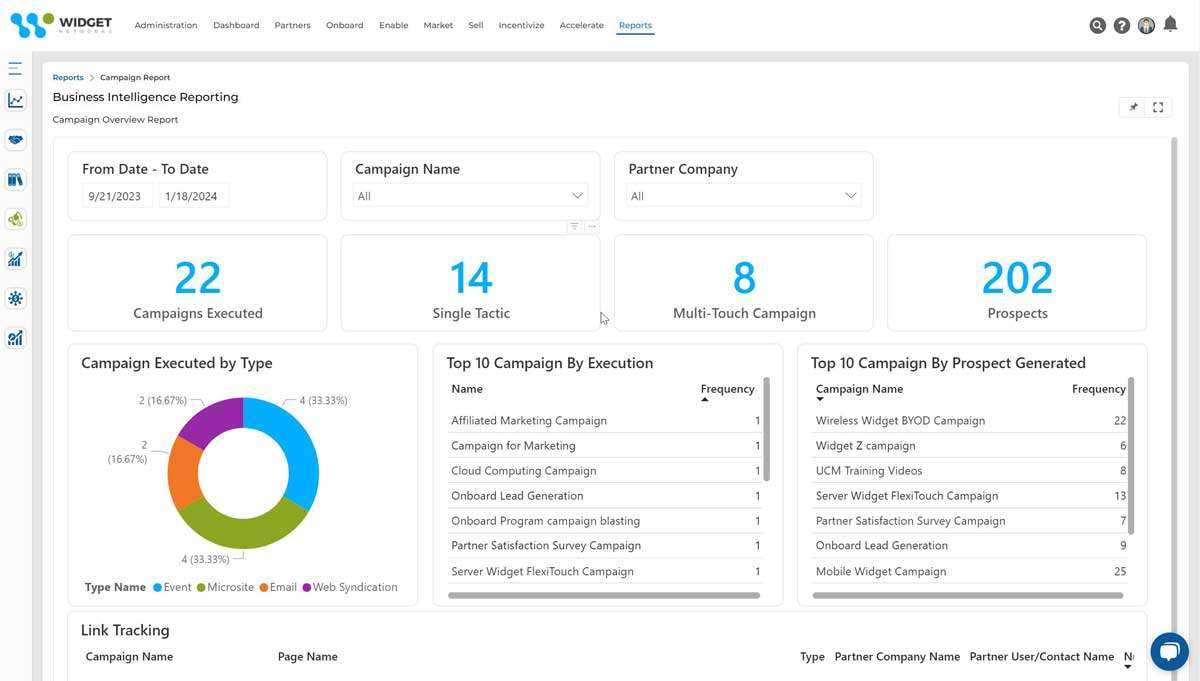
- How do lead generation and conversion rates impact the ROI of direct B2B marketing?
Lead generation and conversion rates are pivotal metrics in determining the ROI of direct B2B marketing initiatives. Lead generation refers to attracting and converting strangers and prospects into someone who has indicated an interest in your company's product or service. A successful lead generation strategy will fill the sales funnel with quality leads, which are more likely to convert into paying customers.
The impact of these metrics on ROI is significant. For example, a high-tech firm might invest in marketing strategies such as content marketing, SEO, and paid advertising to generate leads. The number of leads generated measures the effectiveness of these investments. However, the quality of these leads is equally important, as high-quality leads are more likely to progress through the sales funnel and convert into sales.
Conversion rates, on the other hand, measure the percentage of leads that turn into customers. This metric is critical as it helps high-tech firms understand the effectiveness of their sales processes and marketing messages. A higher conversion rate indicates that the marketing strategies are practical and resonate well with the target audience, contributing positively to the ROI. For instance, if a B2B company implements a targeted email campaign and sees a significant increase in conversion rates, it signifies that the content is well-aligned with customer needs and interests, thereby increasing the ROI of the marketing efforts.
Improving these metrics can significantly impact the overall ROI. For example, enhancing the quality of content, optimizing landing pages, and personalizing marketing messages can lead to higher conversion rates. Similarly, adopting better targeting and segmentation strategies can improve the quality of leads generated, contributing to a higher ROI.
- Why is partner contribution crucial in measuring the success of indirect B2B marketing?
Partner contribution is crucial in measuring the success of indirect B2B marketing because it directly impacts the reach, effectiveness, and overall outcomes of marketing initiatives. In an indirect marketing model, companies rely on partners, such as resellers, distributors, or alliance partners, to market and sell their products. The contributions of these partners can significantly extend the market reach and penetration of the high-tech firm's products beyond what the company could achieve on its own.
Assessing partner contribution helps understand which partnerships yield the best results regarding lead generation, sales conversions, and market coverage. This is vital for allocating resources effectively, optimizing partner relationships, and strategizing future marketing efforts. For instance, a software company may collaborate with various channel partners to distribute its products. By evaluating each partner's contribution to sales and lead generation, the company can identify high-performing partners and focus more on nurturing those relationships.
Furthermore, understanding partner contributions allows for identifying best practices and successful strategies that can be replicated across the partner network to improve overall performance. It also helps pinpoint areas where partners may need more support or training to become more effective in their marketing and sales efforts.
Effective measurement and recognition of partner contributions also strengthen partner relationships, encouraging them to invest more effort into marketing and selling the products. This collaborative approach leads to a win-win situation, where both the company and its partners benefit from increased sales and market growth, ultimately contributing positively to the ROI of indirect B2B marketing activities.
- How can CRM systems and analytics improve the measurement of B2B marketing effectiveness?
CRM systems and analytics play a pivotal role in improving the measurement of B2B marketing effectiveness by providing detailed insights into customer behaviors, campaign performance, and sales outcomes. These tools collect and analyze data from various touchpoints along the customer journey, offering a comprehensive view of the impact of marketing and sales activities.
With CRM systems, companies can track every interaction with prospects and customers, from initial contact to the final sale and beyond. This enables marketers to understand which marketing channels and messages are most effective at generating leads, nurturing prospects, and closing sales. For example, a high-tech firm can use CRM data to determine which email campaigns led to the most demo requests or which content pieces contributed most to advancing prospects through the sales funnel.
Conversely, analytics allows delving deeper into data to uncover patterns, trends, and insights. Marketers can use analytics tools to assess the performance of different marketing strategies, calculate ROI, and identify areas for improvement. For instance, by analyzing website traffic and conversion rates, a B2B company can pinpoint the most valuable traffic sources and allocate more resources to those channels.
Together, CRM systems and analytics enable a data-driven approach to B2B marketing. They allow companies to make informed decisions based on actual customer data rather than assumptions, leading to more targeted, effective, and efficient marketing strategies. This improves the effectiveness of marketing efforts and contributes to a better ROI by ensuring that marketing investments are focused on the most impactful activities.
- What is the role of sales team feedback in enhancing B2B marketing ROI?
Sales team feedback enhances B2B marketing ROI, providing direct insights from the frontline of customer interactions. The sales team is uniquely positioned to offer valuable information on customer needs, preferences, and objections and the effectiveness of marketing materials and strategies from a real-world perspective.
This feedback can refine marketing strategies and materials to align with the target audience's needs and the sales team's experiences. For instance, if sales representatives report that certain marketing materials are consistently effective in engaging prospects, the marketing team can focus on producing more of that type of content. Conversely, if feedback indicates that specific messages or materials are not resonating with prospects or are causing confusion, the marketing team can quickly pivot and adjust their approach.
Incorporating sales feedback into marketing decision-making leads to more relevant and impactful marketing efforts. This alignment between sales and marketing ensures that marketing activities are grounded in the reality of customer interactions and sales processes, leading to improved lead quality, higher conversion rates, and, ultimately, a better ROI.
Moreover, regular communication and collaboration between sales and marketing teams foster a unified customer acquisition and retention approach. By working together, both teams can develop cohesive strategies that effectively guide prospects through the sales funnel, from initial awareness to final purchase.
- How does understanding Customer Lifetime Value (CLV) change B2B marketing strategies and ROI measurement?
Understanding Customer Lifetime Value (CLV) significantly changes B2B marketing strategies and ROI measurement by shifting the focus from short-term transactions to long-term customer relationships. CLV is a metric that estimates the total revenue a business can expect from a single customer account throughout its relationship. By calculating and focusing on CLV, companies can make more informed decisions about how much to invest in acquiring and retaining customers, ultimately leading to more profitable marketing strategies.
CLV's marketing strategies encourage businesses to prioritize customer satisfaction, loyalty, and retention. Instead of just focusing on acquiring new customers, companies are motivated to invest in keeping existing customers happy and engaged, as this can lead to more sustained and predictable revenue streams. For example, a high-tech firm may find that its most profitable customers subscribe to ongoing service contracts rather than making one-time purchases. As a result, the company might shift its marketing focus towards promoting these contracts and enhancing customer support to improve retention rates.
Understanding CLV also helps businesses identify which customer segments are the most valuable and tailor their marketing efforts accordingly. Companies can optimize their marketing spend and improve ROI by allocating more resources to acquiring and nurturing high-value customers. For example, a B2B software company might use CLV data to segment its market and create targeted marketing campaigns to attract and retain high-value clients.
Integrating CLV into B2B marketing strategies and ROI measurement allows companies to make more strategic, data-driven decisions. By focusing on long-term customer value, businesses can develop more sustainable growth strategies, improve customer loyalty, and increase profitability.
Conclusion:Concluding this comprehensive exploration of B2B marketing, it's clear that measuring ROI is not just about crunching numbers but about understanding the broader impact of marketing initiatives on long-term business success. Whether through direct or indirect strategies, effective B2B marketing requires a blend of analytical rigor and strategic insight. By focusing on key performance indicators, valuing partner contributions, leveraging advanced technologies, and integrating sales insights, companies can unlock the full potential of their marketing efforts. Understanding and maximizing Customer Lifetime Value further shifts the focus from transactional interactions to fostering enduring business relationships. Ultimately, by meticulously measuring and optimizing ROI, high-tech manufacturers, and other B2B entities can ensure they are not just reaching their target audience but are doing so in a manner that is both efficient and effective, paving the way for sustained business growth and success.
Wrapping up
In conclusion, the landscape of B2B marketing, particularly in the high-tech industry, is marked by continuous evolution and complexity. High-tech manufacturers and companies must navigate challenges, from identifying and reaching decision-makers within other businesses to differentiating their offerings in a crowded market. Yet, the opportunities for growth and innovation within this space are significant. Companies can enhance their market presence and drive business success by leveraging targeted strategies such as account-based marketing, embracing digital platforms and social media, and fostering robust partner relationships.
Moreover, the shift towards digital has transformed B2B marketing, making it more data-driven and personalized than ever before. Integrating AI, machine learning, and analytics into marketing strategies offers unprecedented insights into customer behaviors and preferences, enabling companies to tailor their approaches and achieve higher engagement rates.
However, B2B marketers must remember that at the heart of effective marketing lies understanding the customer's needs and challenges. By focusing on creating value, providing solutions, and building lasting relationships, companies can not only navigate the complexities of the B2B landscape but also emerge as leaders in their respective fields.
As we look to the future, trends such as sustainability, the rise of virtual and digital experiences, and the growing importance of corporate social responsibility will continue to shape the B2B marketing arena. High-tech manufacturers and B2B companies must stay ahead of these trends, continuously adapt their strategies, and invest in understanding their customers' evolving needs.
In essence, the success of B2B marketing in the high-tech industry hinges on a delicate balance between technological innovation, strategic relationship-building, and deep market insight. By addressing these critical areas, companies can unlock new avenues for growth, foster meaningful connections, and ultimately drive substantial returns on their marketing investments. The journey through the B2B marketing landscape is complex and challenging, but the rewards can be significant and enduring for those willing to invest in understanding and adapting to its nuances.
For more information, please check this article.


Best Practices Guidebook
 The Channel Sales Playbook: Skills, Strategy, and Growth
The Channel Sales Playbook: Skills, Strategy, and GrowthDownload for FREE
 Blueprints for Vertical Success Best Practices
Blueprints for Vertical Success Best PracticesDownload for FREE
 The Future of Partner Enablement: From Enablement Gaps to Global Advantage
The Future of Partner Enablement: From Enablement Gaps to Global AdvantageDownload for FREE
 Reimagine Sales Development. Build a Smarter Prospecting Engine
Reimagine Sales Development. Build a Smarter Prospecting EngineDownload for FREE
 The Zero Trust Imperative: Fortifying Enterprise Security Against AI-Driven Threats
The Zero Trust Imperative: Fortifying Enterprise Security Against AI-Driven ThreatsDownload for FREE
 PartnerOps Excellence: The Definitive Guide to Scalable SaaS Ecosystems
PartnerOps Excellence: The Definitive Guide to Scalable SaaS EcosystemsDownload for FREE
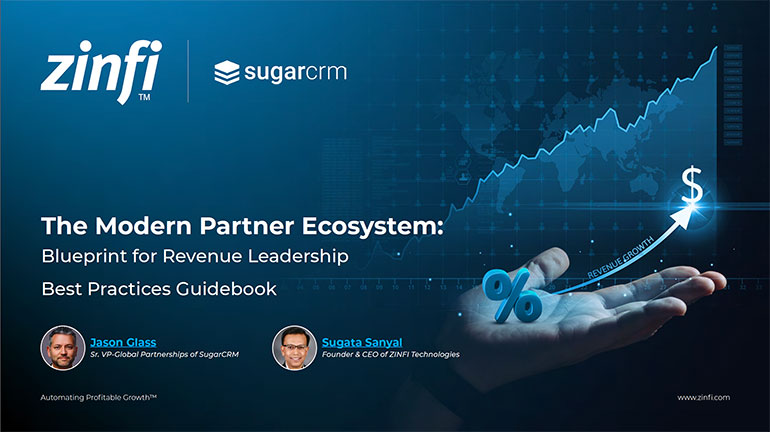 The Modern Partner Ecosystem Best Practices
The Modern Partner Ecosystem Best PracticesDownload for FREE
 Partner Marketing Reimagined: Strategies for Agile, Insight-Led Growth
Partner Marketing Reimagined: Strategies for Agile, Insight-Led GrowthDownload for FREE
 Scaling with PartnerOps Best Pratices
Scaling with PartnerOps Best PraticesDownload for FREE
 Leading with Partner Programs Best Pratices
Leading with Partner Programs Best PraticesDownload for FREE
 The Partner-First Blueprint: Scaling Trust, Intelligence, and Ecosystem Growth
The Partner-First Blueprint: Scaling Trust, Intelligence, and Ecosystem GrowthDownload for FREE
 Unlock Scalable Growth with The Partner Marketing Growth Blueprint
Unlock Scalable Growth with The Partner Marketing Growth BlueprintDownload for FREE
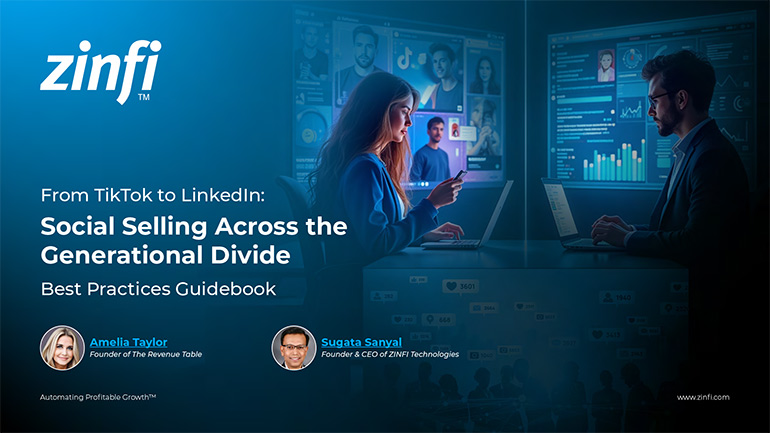 From TikTok to LinkedIn: Social Selling Across the Generational Divide
From TikTok to LinkedIn: Social Selling Across the Generational DivideDownload for FREE
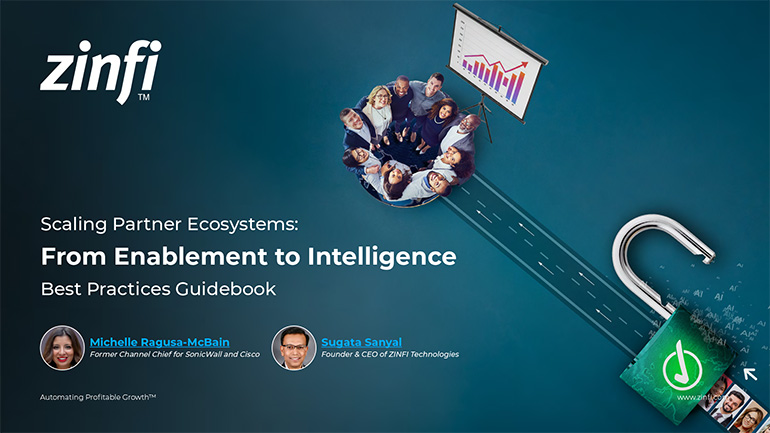 Scaling Partner Ecosystems: From Enablement to Intelligence
Scaling Partner Ecosystems: From Enablement to IntelligenceDownload for FREE
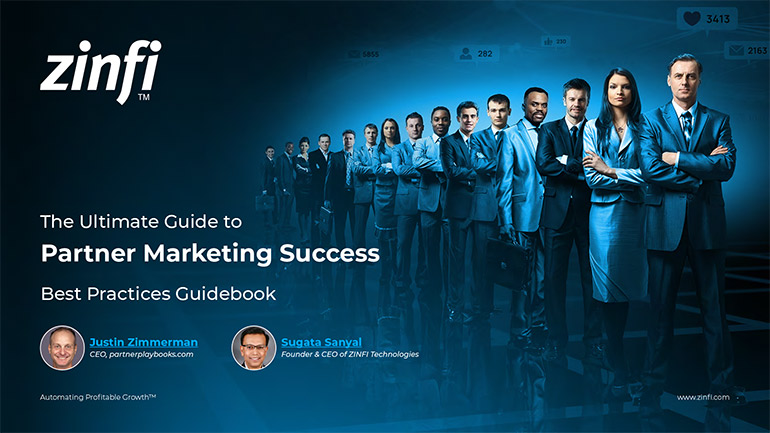 The Ultimate Guide to Partner Marketing Success Best Practices
The Ultimate Guide to Partner Marketing Success Best PracticesDownload for FREE
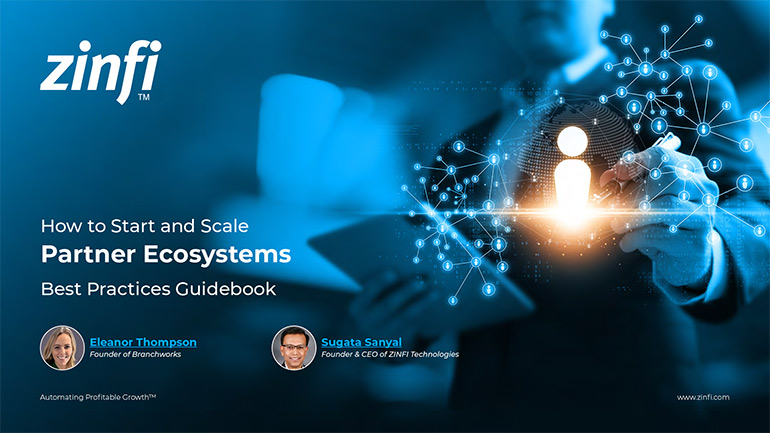 How to Start and Scale Partner Ecosystems Best Practices
How to Start and Scale Partner Ecosystems Best PracticesDownload for FREE
 The Evolution of PartnerOps: Past, Present & Future Best Practices
The Evolution of PartnerOps: Past, Present & Future Best PracticesDownload for FREE







